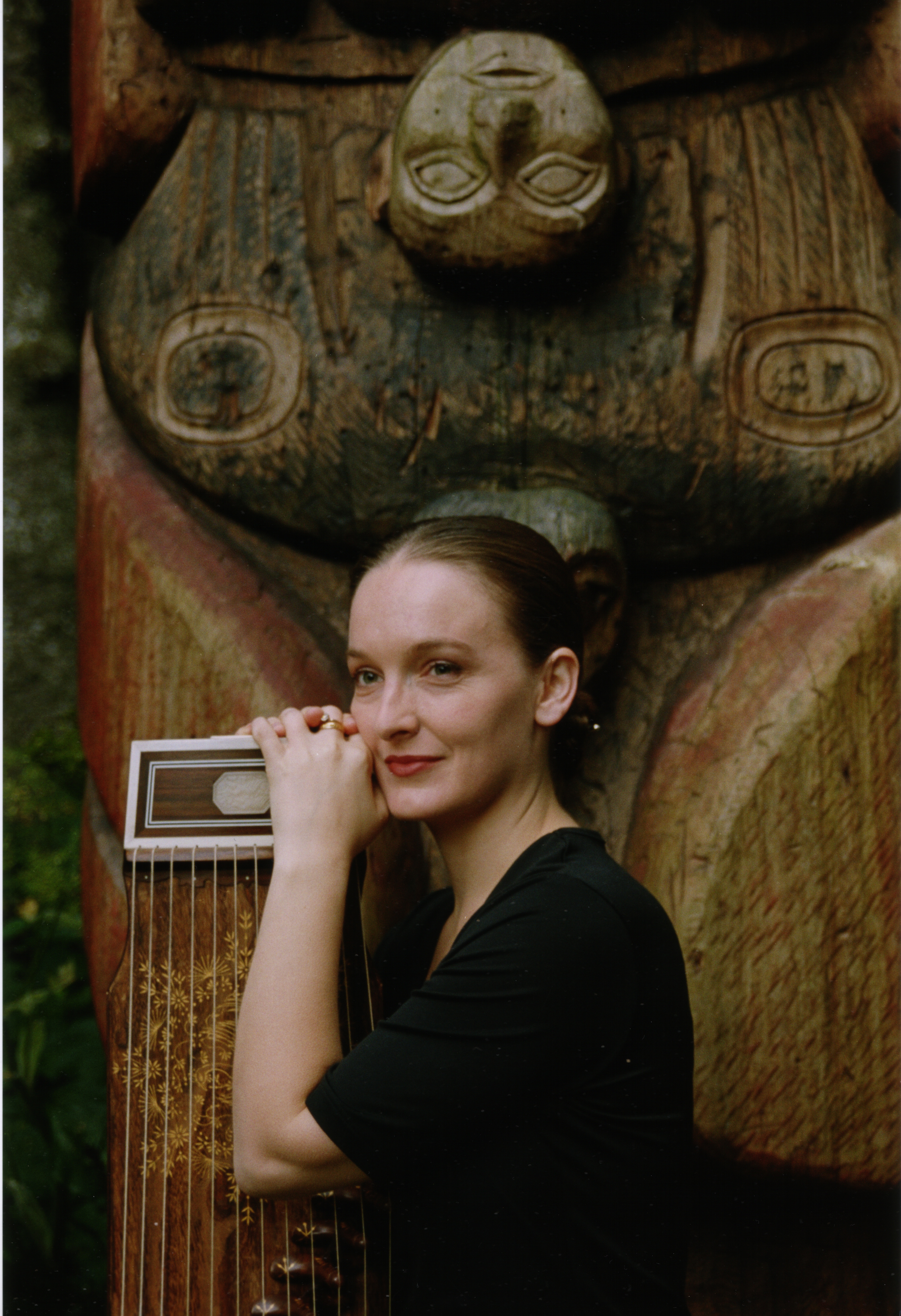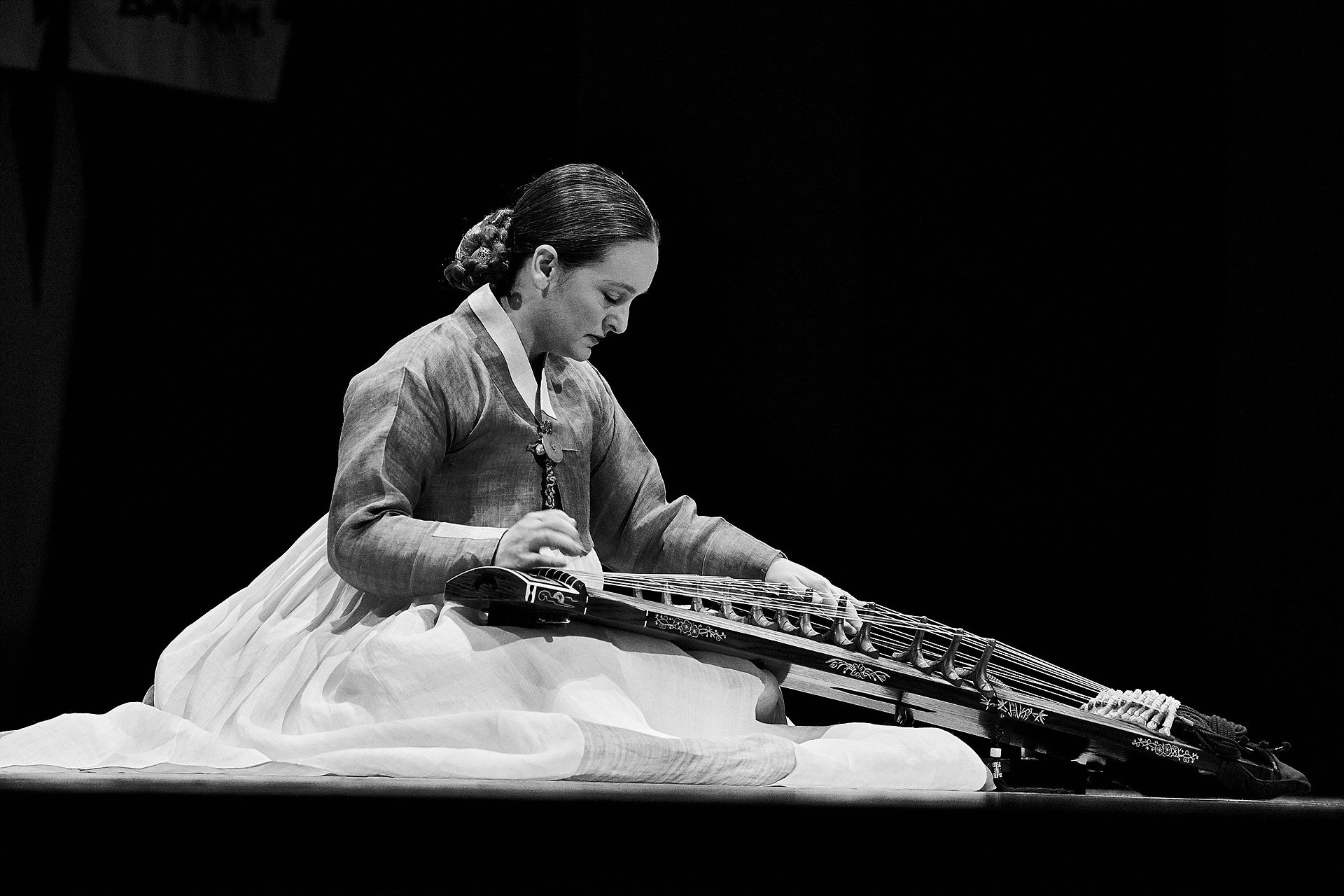 [Interview]Professor Jocelyn Clark’s Love of Gayageum
[Interview]Professor Jocelyn Clark’s Love of Gayageum
Professor Jocelyn Clark has played the gayageum for 30 years.
Jo Se-rin, a professor of East Asian studies at Pai Chai University’s
Ju Si-Gyeong Liberal College, was born Jocelyn Clark in Washington,
D.C. Growing up in Juneau, Alaska, she played the violin, oboe, and
clarinet, and later developed an interest in Asian culture and music.
One after the other, she learned to play the traditional musical
instruments of different Asian countries — first Japan’s koto and
China’s guzheng before finally finding her life’s path in Korea’s
gayageum (a traditional 12-stringed Korean zither). The KF met with
Professor Clark, who has now been a gayageum player for 30 years.
I heard that you came to Korea because you were charmed by the
gayageum. Is this true?
Many people think so, but it’s not true. The gayageum isn’t so easy
that you can fall in love with it so quickly. It’s very difficult to
play properly because it takes quite a long time to distinguish its
sound. It would be better to say that I fell in love with the gayageum
while studying it and working to listen to it and produce a proper
sound.
How did you decide to study the gayageum, then?
I majored in Asian studies at my university and was always interested
in ethnomusicology, particularly the comparison of the traditional
instruments of Korea, China, and Japan. So I decided to learn the
Korean gayageum after trying out the Japanese koto and Chinese
guzheng. Looking for ways to learn the gayageum, I sent a letter to
the director-general of the National Gugak Center of Korea asking if I
could study the instrument there on a scholarship. I had low hopes
because the center had almost no program for foreigners then, but I
was soon accepted as a scholarship student. This was in 1992, when I
was 22 years old. I left the US and came to Korea to begin studying.
At first, it was extremely hard and difficult to understand the
instrument because its tune and everything about it differs from
Western instruments.
You successfully overcame that difficult process and are now quite
active as a “gayageum evangelist.” I understand you’re busy
preparing for a solo recital these days.
Being in the middle of the semester, I have to teach students, prepare
for academic conferences and papers, and take care of things at the
National Gugak Center, so I haven’t been able to practice for the
recital as much as I would like to. I currently study under Ji
Seong-ja, who is a master of gayageum sanjo (a type of freestyle
gayageum performance, played solo), Jeollabuk-do Intangible Cultural
Property No. 40. She’s the eldest daughter of the late Seong
Geum-yeon, who originated her own gayageum sanjo. My teacher thinks
I’m lacking in practice and am therefore unprepared for the recital.
Usually, during school vacation periods, I go to her house and
practice there, but unfortunately, I can’t do so these days. The
recital will be a small event at a little hanok (a traditional
Korean-style home) or my teacher’s residence — because of the COVID-19
pandemic, it’s impossible to have a big event with a large audience.
The recital is titled “The Seong Geum-yeon School Preservation
Society: Third Apprentice Recital.” I’ll play long sanjo, a kind of
performance that feels like a test for me. Actually, the recital will
be an occasion for my teacher and students to assess my level of
mastery.
Please explain long sanjo for our readers.
Short sanjo usually lasts 10 to 20 minutes, but long sanjo takes about
an hour. If I were to compare sanjo to studying, I would say that
performing short sanjo is like writing a master’s thesis and
performing long sanjo is like doing a PhD dissertation. In the case of
long sanjo, the research needed is so extensive that a whole day is
required to do just one round of practice. Therefore, one needs long
hours and perseverance to do long sanjo. Practicing sanjo is like
trying to reach the highest mountain peak, and I think I still have a
long, rugged way ahead.

How do audiences react to your performances?
Many people describe them as “good” or “marvelous” simply because I’m
a foreigner playing the gayageum, but I know when I do well. Of
course, there have been more than a few times when I thought I did
well only to change my mind later; as my ears become better or open
wider, my standard of performance quality changes, too.
You said that you’ll be performing at the “Third Apprentice
Recital.” Would you elaborate on the meaning of “apprentice?” Are
you an apprentice?
The term “apprentice” here refers to both finishers and apprentices.
Finishers are those who have trained long under a master and sometimes
have to take a test in front of first-year students. Apprentices need
to take a state-administered test to earn their title. I’m a finisher
of gayageum sanjo, as foreigners can’t become apprentices under
pertinent Korean regulations on intangible cultural property
transmission. I think I’m the first foreigner to have become a
finisher. There are other foreigners who perform gugak (traditional
Korean music), but as far as I know, none of them belong to the circle
of cultural property transmission. There are also a few Koreans abroad
who perform gugak, but they’re regarded as Korean and seldom thought
of as foreign performers. But I’m seen as a foreigner. (Laughs.)
Overseas Koreans have to put in considerable effort, just as I have,
since they don’t usually experience gugak from early childhood.
Perhaps they have a tougher time learning and performing gugak than I
do since Koreans expect much more from them.
It seems that you, as a finisher, have reached a certain level of
mastery. Would you agree?
As I said earlier, it takes a long time to distinguish the sound of
the gayageum. Naturally, it’s then an even longer and more difficult
process to produce the correct sound. I’ve been playing the gayageum
for three decades, but I’m still not confident in my performance.
While practicing, I occasionally feel that I’m doing well, but once I
play for my teacher, she says that it’s all wrong. Then I go back and
figure out where I’ve made errors. Often, I become excited and
emotional while playing, but my sound isn’t the sound my teacher
wants. Each time, it’s like reaching the peak of a mountain, but upon
the way down, realizing that I wasn’t on the summit I had wanted to
reach. This happens again and again. However, I’ve realized that I
should quit going back down and just keep on climbing. (Laughs.) Only
when you stand on the summit of a mountain can you command other
peaks.
I understand that you recently took part in the production of a
meaningful album.
Last November, I performed in a concert at Incheon Art Platform as
part of the production of a collaborative album. The project combined
visual art and music, using waves of water as a motif. Artist Song
Chang Ae created a multisensory stage on which I; gayageum player Park
Suna, a Korean musician living in Japan; and guitarist Park Seok-ju
performed a piece called Water Odyssey without a score. What we played
wasn’t sanjo or any traditional music, nor was it a piece of
contemporary music. I can’t call it anything but “improvisational
music.” It lasted for about an hour, which was truly amazing; I didn’t
know I could improvise for over an hour. The concert took place upon
the suggestion of music director and bassist Kim Sungbae. During the
concert, I was able to confirm how quickly I could immerse myself in
an impromptu performance. It was a very significant challenge for me,
and proof that I could successfully collaborate with other performers.
Last but not least, what are your future plans?
I hope to play sanjo better, and byeongchang (singing while playing
the gayageum), too. I’m currently concentrating on sanjo so as to
produce an album within this year. In the meantime, I would like to
take this interview as an opportunity to express gratitude to my
teacher, Ji Seong-ja. I also want to give thanks to designer Jeong
Seo-mi from Dan Korean Costume and Cho Jun-seok from Nangye Gugak
Instruments, whose artistry is Chungcheongbuk-do Intangible Cultural
Property No. 19. They have gone to enormous trouble for my
performances. Thank you so much.
△ Jo Se-rin (Jocelyn Clark)
- - Born in 1970 in Washington, D.C., USA
-
- Learned to play the Japanese koto (Tadao Sawai School), 1988
-
- Learned to play the Chinese guzheng at Nanjing University of
Arts in China, 1990
-
- Graduated from Wesleyan University with a B.A. in East Asian
studies, 1992
-
- Learned to play the gayageum at the National Gugak Center of
Korea, 1992–1995
-
- Earned a master’s degree in East Asian regional studies, Harvard
University, 1994
-
- Earned a PhD in East Asian languages and civilizations, Harvard
University, 2005
-
- Currently learning gugak from Ji Seong-ja (Seong Geum-yeon
School sanjo); Kang Eun-kyeong (gayageum byeongchang, etc.); Hwang
Byungki (contemporary music); Kang Jeong-suk (gayageum
byeongchang, etc.); Ji Aeri (Seong Geum-yeon School sanjo, etc.);
and Yi Ji-Young (court music, etc.).
-
- Current member of the Daejeon Metropolitan City Foreign Resident
Support Advisory Committee
-
- Current director of the Asian Contemporary Art Consortium (ACAC)
and leader of the band IIIZ (formed 2001)
- - Currently a professor at Pai Chai University
 한국국제교류재단
한국국제교류재단 newsletter
newsletter












